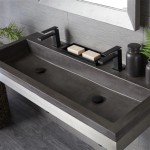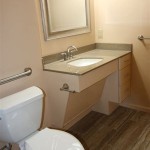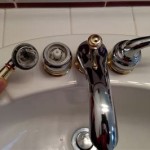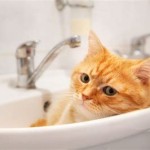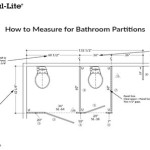Get Rid of a Smelly Bathroom Sink: A Comprehensive Guide
A persistent foul odor emanating from a bathroom sink can be an unpleasant and embarrassing issue. The source of the smell is often a buildup of organic matter, bacteria, and mineral deposits within the drain and plumbing system. Identifying the cause and implementing a proper cleaning and maintenance routine is crucial to eliminating the offensive smell and preventing its recurrence. This article provides a detailed guide to address a smelly bathroom sink effectively.
Identifying the Source of the Odor
Before tackling the problem, it's important to pinpoint where the smell originates. Several factors can contribute to a foul-smelling bathroom sink:
Biofilm Buildup: A slimy layer of bacteria, soap scum, hair, and other debris can accumulate on the inner walls of the drainpipe. This biofilm provides an ideal breeding ground for odor-producing bacteria. The decomposition of organic matter within the biofilm releases gases such as hydrogen sulfide, which is responsible for the characteristic rotten egg smell often associated with drain problems.
Clogged Drain: Partial or complete clogs restrict water flow and trap organic material in the drainpipe. This trapped material decomposes and emits foul odors. Common culprits include hair, toothpaste, soap residue, and small objects that accidentally fall into the drain.
Dry P-Trap: The P-trap is a U-shaped pipe located under the sink. It is designed to hold water and create a seal that prevents sewer gases from entering the bathroom. If the sink is infrequently used, the water in the P-trap can evaporate, breaking the seal and allowing sewer gases to escape. This is particularly common in guest bathrooms or sinks that are not regularly used.
Ventilation Issues: A plumbing vent system allows air to enter the drainpipes, preventing a vacuum from forming and ensuring proper drainage. If the vent system is blocked or damaged, it can cause negative pressure in the drainpipes, drawing sewer gases back into the bathroom through the sink drain.
Sewer Line Problems: In rare cases, the odor may originate from a more serious problem in the main sewer line. A cracked or damaged sewer line can leak sewer gases into the plumbing system. This is more likely if multiple drains in the house are emitting foul odors.
Cleaning and Maintenance Strategies
Addressing a smelly bathroom sink typically involves a combination of cleaning and maintenance techniques to remove the source of the odor and prevent its return. The following methods are effective in combating this problem:
Flushing with Hot Water: The simplest and often most effective solution is to flush the drain with hot water. Allow hot water to run down the drain for several minutes. This can help loosen and dislodge accumulated debris and biofilm. The heat of the water can also kill some of the odor-producing bacteria.
Baking Soda and Vinegar: This is a natural and effective cleaning method. Pour one cup of baking soda down the drain, followed by one cup of white vinegar. The mixture will fizz and bubble, helping to loosen debris and neutralize odors. Let the mixture sit for 30 minutes, then flush with hot water.
Boiling Water: For persistent odors, pour a pot of boiling water down the drain. The boiling water can effectively dissolve grease and soap scum buildup. Exercise caution when pouring boiling water down the drain, especially if the sink is made of porcelain, as the sudden temperature change could cause cracking. Avoid using boiling water if your pipes are PVC, as it may damage them.
Drain Snake: A drain snake or auger can be used to physically remove clogs from the drainpipe. Insert the drain snake into the drain opening and rotate it to break up and remove any obstructions. Be careful not to damage the drainpipe with the drain snake.
P-Trap Cleaning: Cleaning the P-trap is a more involved process but can be highly effective in eliminating odors. Place a bucket under the P-trap to catch any water. Loosen the slip nuts that connect the P-trap to the drainpipes. Carefully remove the P-trap and empty its contents into the bucket. Clean the P-trap thoroughly with soap and water, removing any accumulated debris. Reassemble the P-trap, ensuring that the slip nuts are tightened securely. Run water down the drain to ensure that the P-trap is properly sealed.
Enzyme Drain Cleaners: Enzyme drain cleaners contain beneficial bacteria that break down organic matter. These cleaners are a more environmentally friendly alternative to chemical drain cleaners. Follow the instructions on the product label for proper usage.
Chemical Drain Cleaners: Chemical drain cleaners are a last resort option, as they can be corrosive and harmful to the environment. Use chemical drain cleaners only if other methods have failed. Follow the instructions on the product label carefully and wear gloves and eye protection. Avoid using chemical drain cleaners if you have PVC pipes, as they can damage them.
Preventative Measures
Preventing a smelly bathroom sink is easier than dealing with the problem once it develops. Implementing a consistent maintenance routine can significantly reduce the likelihood of odors and clogs.
Regular Flushing: Flush the drain with hot water regularly, especially after using the sink for tasks that may leave behind residue, such as shaving or brushing teeth. This will help prevent the buildup of debris and biofilm.
Hair Catcher: Install a hair catcher or strainer in the drain to prevent hair from entering the drainpipe. This will significantly reduce the risk of clogs caused by hair accumulation.
Avoid Pouring Grease Down the Drain: Never pour grease or oil down the drain. Grease solidifies as it cools, forming a sticky substance that can clog the drainpipe. Dispose of grease in a separate container.
Periodic Cleaning: Periodically clean the drain with baking soda and vinegar to prevent the buildup of biofilm. This will help keep the drain clean and odor-free.
Maintain P-Trap Water Level: If the sink is not used frequently, periodically run water down the drain to maintain the water level in the P-trap and prevent sewer gases from escaping.
Inspect and Clean Sink Stoppers: The bathroom sink stopper can accumulate hair, soap scum, and other debris. Regularly inspect and clean the sink stopper to prevent odors.
Proper Ventilation: Ensure that the bathroom has adequate ventilation. Proper ventilation helps to remove moisture and prevent the growth of mold and mildew, which can contribute to unpleasant odors.
Professional Plumbing Inspection: If the problem persists despite your efforts, it may be necessary to consult a professional plumber. A plumber can inspect the plumbing system for more serious issues, such as problems with the vent system or sewer line. Early detection and repair of such issues can prevent more extensive damage and costly repairs.
By following these steps, one can effectively eliminate smelly odors from a bathroom sink, improve the overall cleanliness of the bathroom environment, and prevent future occurrences of this unpleasant problem. Consistent maintenance and preventative measures are key to keeping the bathroom sink fresh and odor-free.

How To Clean A Stinky Sink Drain By Home Repair Tutor
:max_bytes(150000):strip_icc()/__opt__aboutcom__coeus__resources__content_migration__mnn__images__2018__08__sink_drain-351af8e441034f319fe07f00c091d8b6.jpg?strip=all)
How To Clean A Smelly Drain Naturally

How Can I Help A Stinky Bathroom Sink Drain Cleaning More

How To Clean A Smelly Sink

Why Your Bathroom Sink Drain Smells

What To Do When The Bathroom Sink Smells Like Mildew Mold Smell

How To Get Rid Of The Sewer Smell From A Bathroom Terry S Plumbing

How To Get Rid Of Drain Smell 8 Easy Tricks You Can Try

How To Clean Smelly Drains Living By Homeserve

Why Your Drain Smells And How To Fix It Fast
Related Posts
